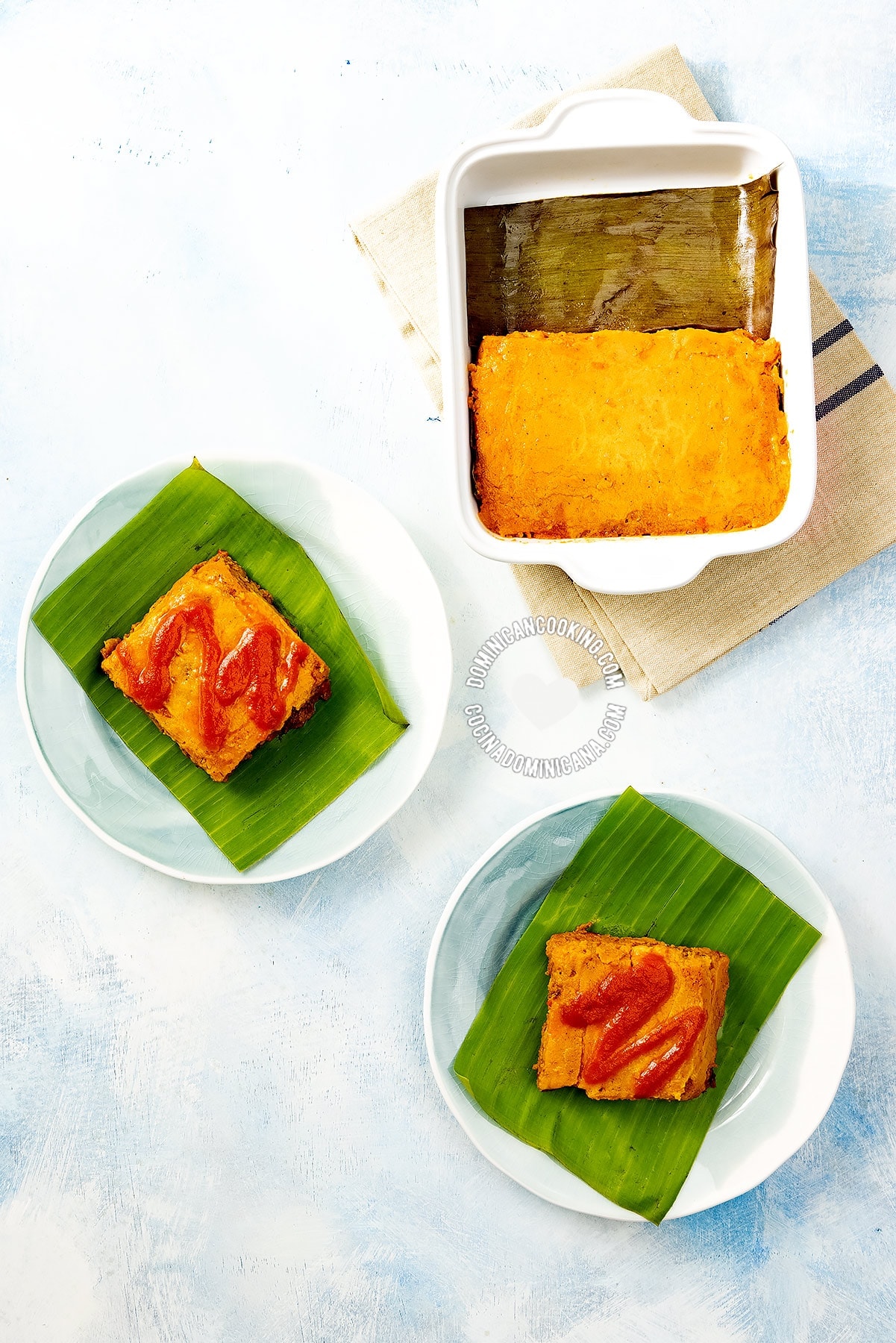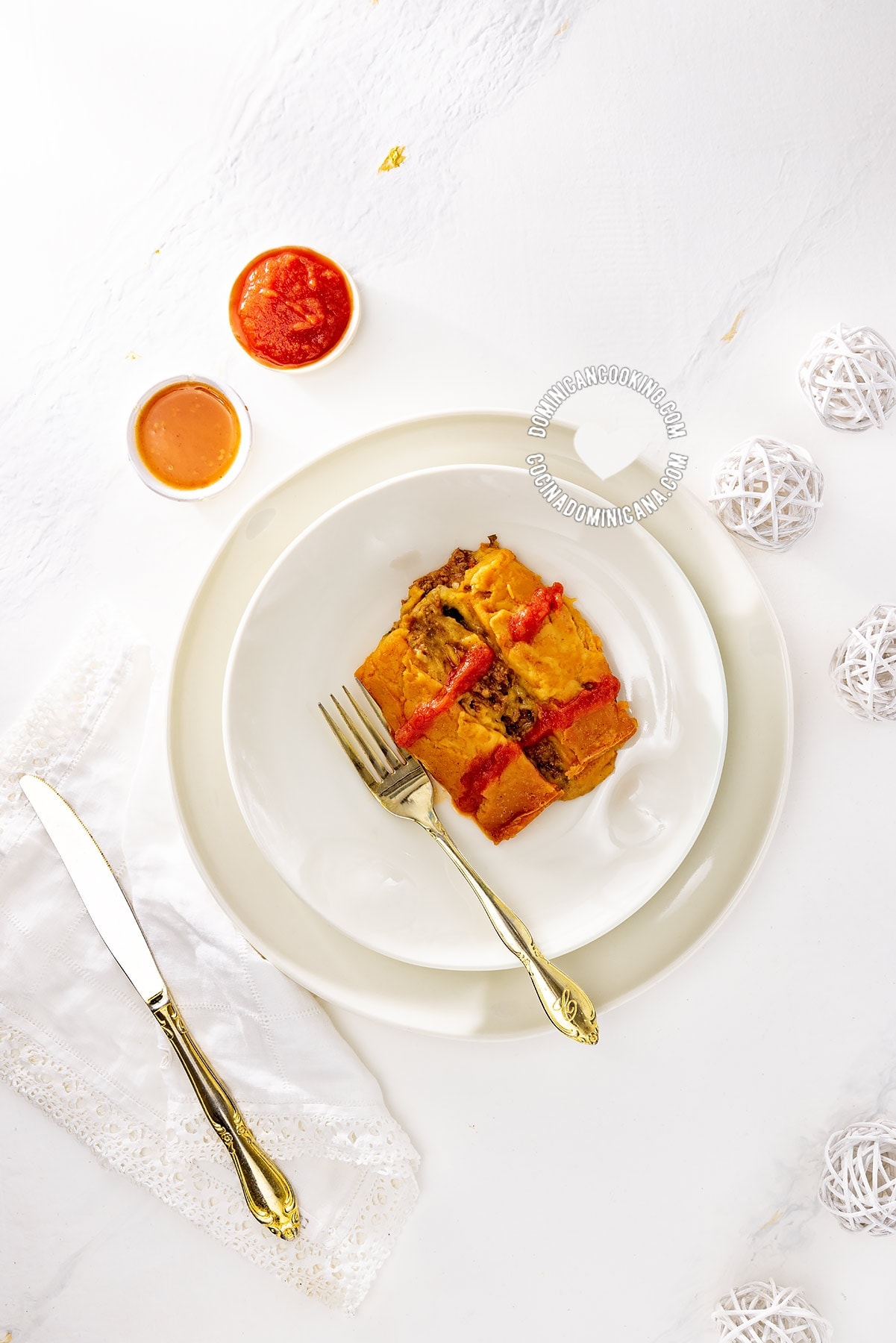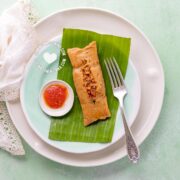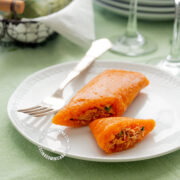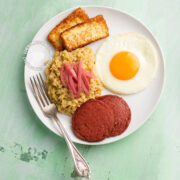We absolutely love pasteles en hoja, but let's be honest: they are a lot of work to make. This recipe for pastelón "en hoja" simplifies the process and retains the flavors and textures we love so much.
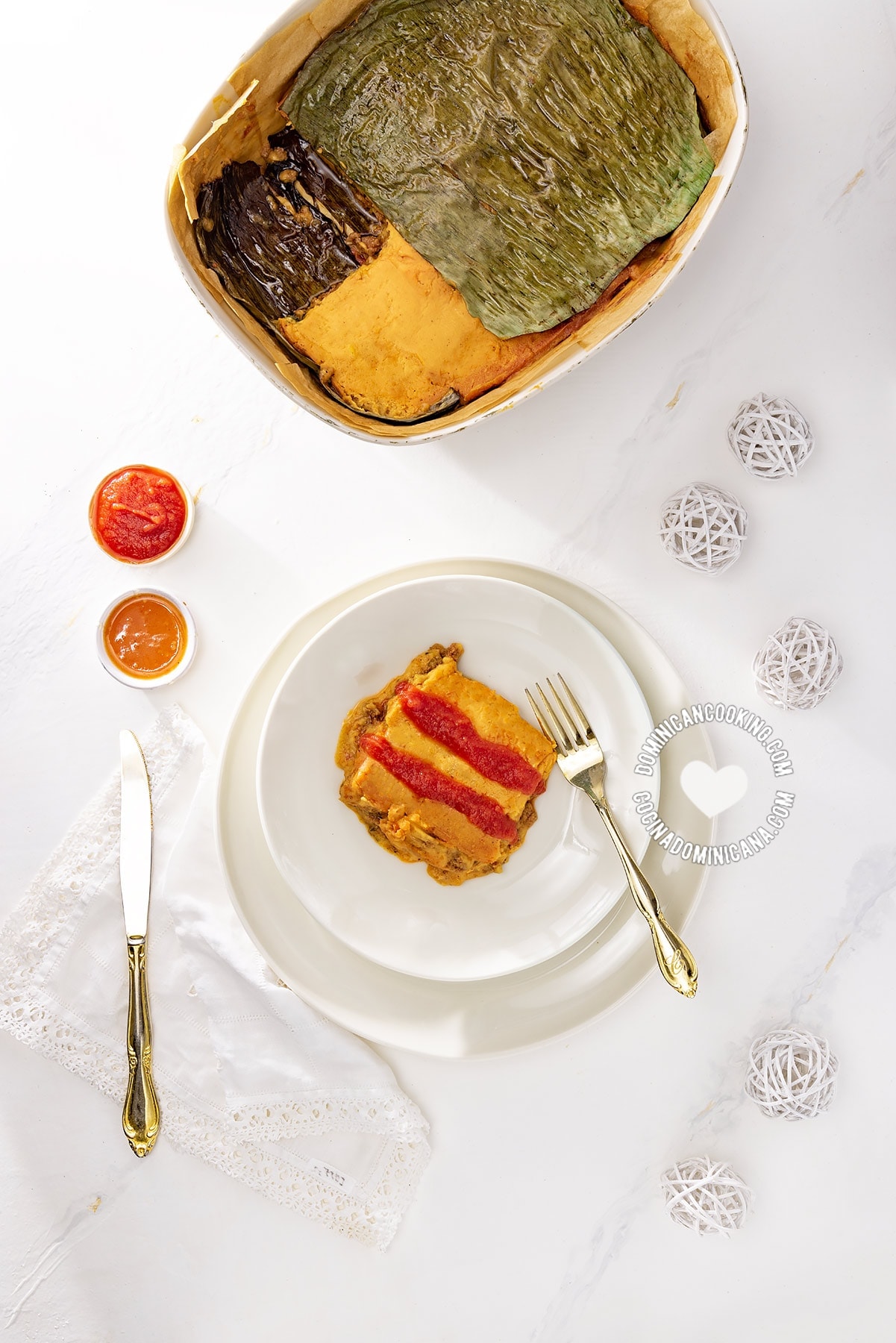
Why we ❤️ it
You know there can't be Christmas without pasteles, right? But making them is so labor-intensive that most Dominicans buy pasteles made by their favorite vendor. It's a cottage industry in our country. But what if I tell you you can get the same consistency and flavor with less work?
Yeah, that's right. No more "guayar" (hand-grating), wrapping and unwrapping, just have pasteles any time.
Fillings
On the photos, you'll see that I went with the traditional beef filling, but there are many more fillings you can use, and you can click below to see the recipes. I added some cheese to it to see if I liked it, and I actually did, so you may or may not try that too.
See all our pastelones fillings recipes and pick your favorite.
Variations
You can make this a vegan recipe by simply substituting vegetable oil for butter, or using a neutral-tasting vegetable fat, and using your favorite milk substitute. There is a vegan mince filling that would go great with it (I tried it in traditional pasteles). For a two for one, use aceite de bija (annato oil) in lieu of both butter and bija powder.
Feel free to leave out the cheese if you want. The cheese makes it mushier when hot, so if you want more firm consistency, leaving out the cheese might be a good idea.
Serving suggestions
What you serve with this pastelón will depend on the occasion. At the Christmas feast, we serve it alongside a much large festive menu, but since this one is so easy to make, you can make it for dinner or lunch any day, and serve it alongside a salad of your choice.
If you're not eating it right away, keep tightly covered with aluminum foil until it's time to serve so it doesn't dry out.
Substitutions
Using plantain leaves is preferred, but not strictly necessary (same as with traditional pasteles), but the batter is sticky, so you need to use something to line the pan. I suggest parchment paper, greased with oil. Neither aluminum foil nor waxed paper worked well for me. A greased silicone baking pan would probably work well.
If you don't have parchment paper or plantain leaves and don't mind if it sticks some to the pan, just grease the pan beforehand and don't use paper or leaves.
I have not tried this with the pasteles de yuca batter, but I am pretty sure it can be adapted by adding a bit of extra liquid. I'll try it later and report.
About this recipe
I got the idea to make this when I made a gajillion pasteles for photos and videos for our recipe. I jokingly said on Instagram that I would never wrap another pastel in my life (I certainly will). I decided that I had to find an easier way to enjoy pasteles on random days without all the work. Since then I have made this several times because I positively wasn't going to mess with a good thing and share it with you if I wasn't sure it worked.
The "masa" (batter) is very creamy, although it might dry out just a bit on the surface (covering as tightly as possible helps a lot), it still remains creamy inside because it's a bit more liquidy than the traditional pasteles batter.
You'll notice it is an orange color, that's both the auyama and bija. I personally find the greenish color in some pasteles unappetizing. The auyama makes it more creamy too.
I used a regular lasagna pan for this, and this recipe yields 6 servings (dinner size), or 8 if you'll be serving it as part of a larger meal.

Recipe
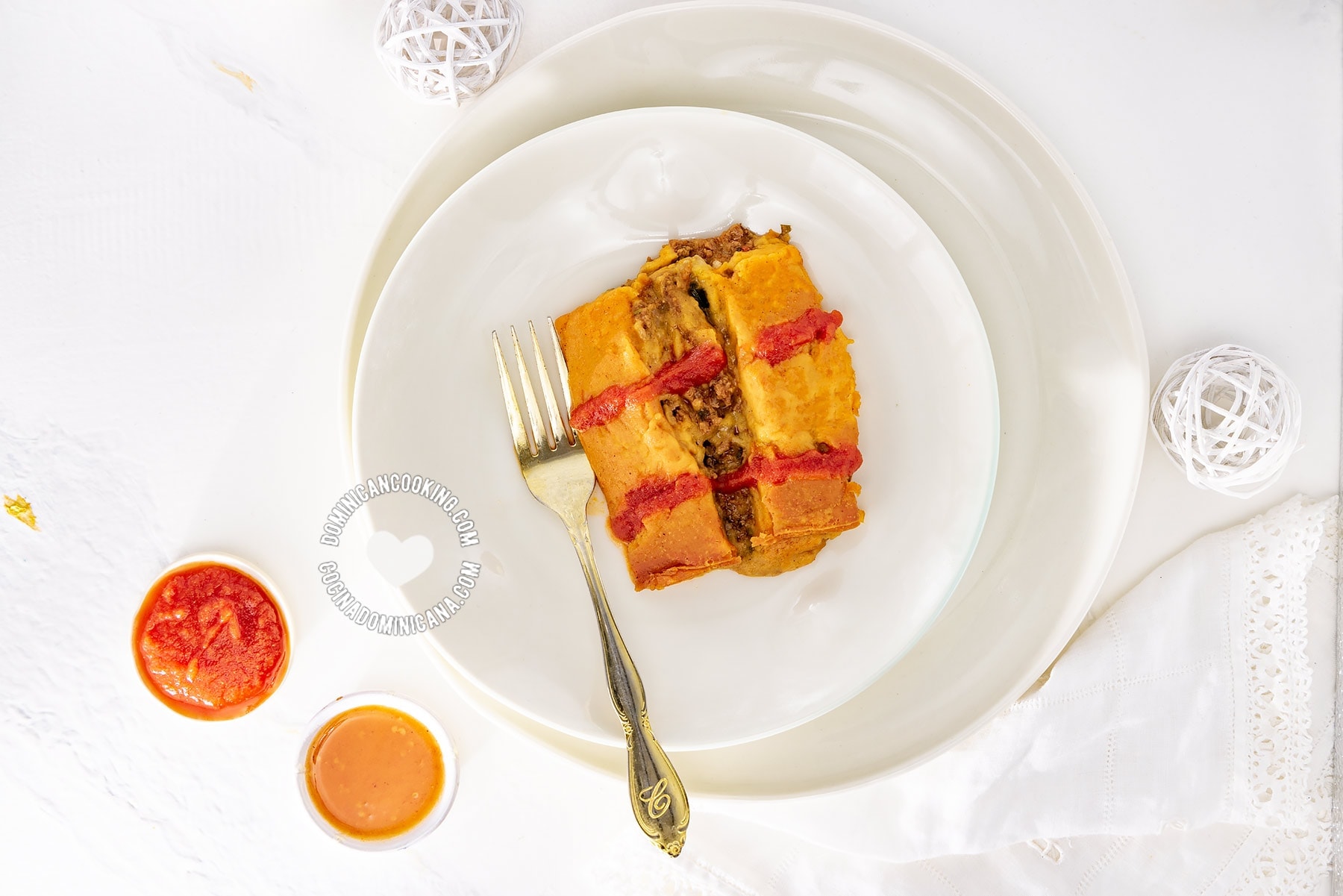
[Recipe + Video] Pastelón en Hoja (Easy Pasteles Casserole)
Ingredients
Filling
- Filling, (see list above recipe)
- 1 cup shredded cheddar cheese, (optional, for this I used a mozzarella and mild cheddar mix)
For the batter
- 1 plantain (green, unripe), peeled and chopped
- ⅓ pound yautía (malanga), [151 g] peeled and chopped
- ⅓ pound auyama (kabocha squash), [151 g] peeled and chopped
- 1 tablespoon seasoning powder, (salt-free, must contain garlic and onion)
- 1¼ cup milk (whole or skim), [296 ml]
- 1½ teaspoon salt
- 2 tablespoon butter (salted), [28 g]
- 1 tablespoon bija (annato, achiote) powder
For covering
- vegetable oil, to grease pan and leaves
- 2 plantain leave squares
- 2 leafs parchment paper, (Amazon affiliate link)
- Aluminum foil
- Salt
Instructions
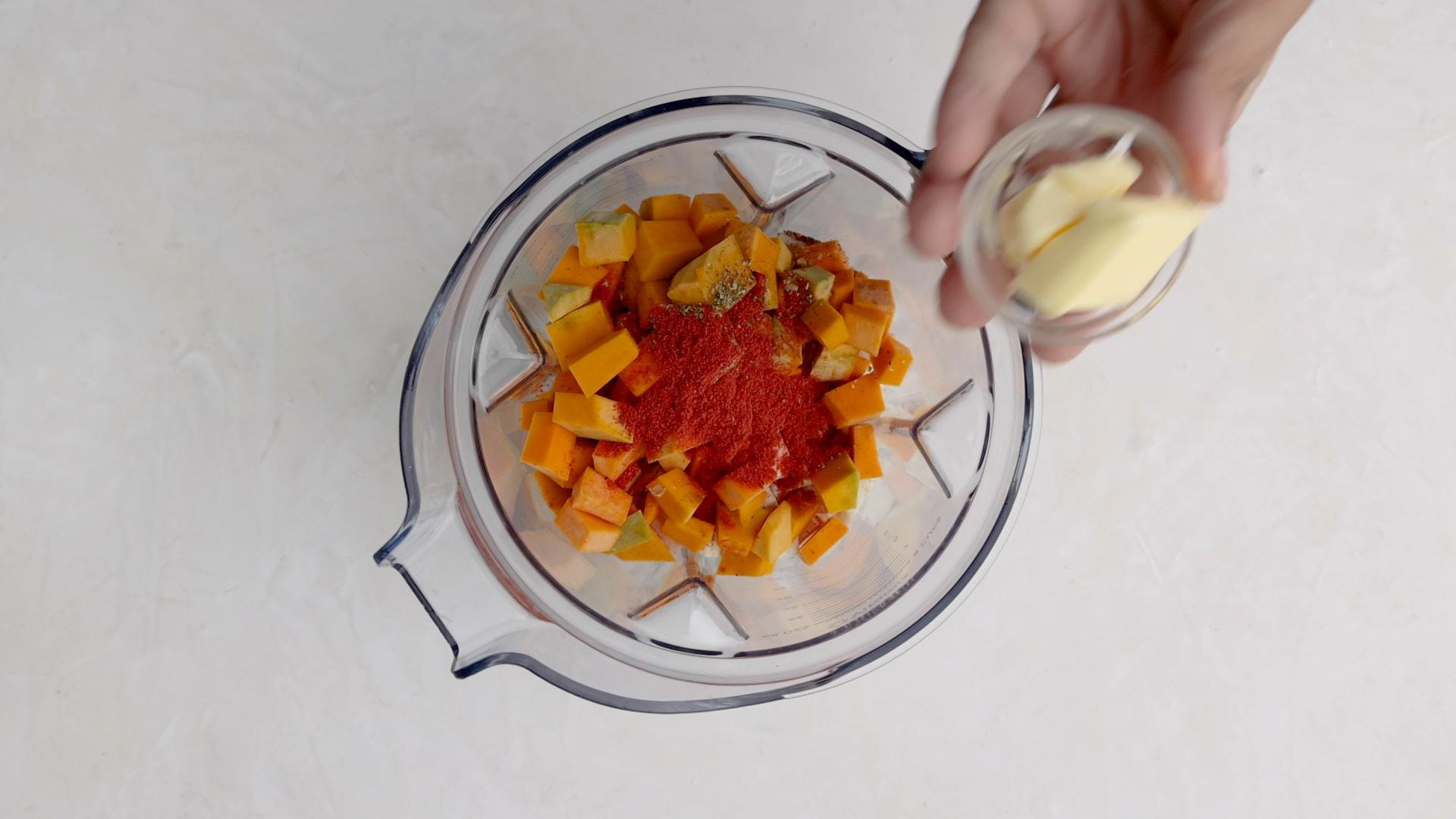 Making the batter by hand: Grate the plantain, yautía, and auyama with the least coarse side of the grater. Once grated, combine all the ingredients for the batter and mix well.Making the batter with blender or food processor: Chop the plantain, yautía, and auyama, and combine with the rest of the ingredients for the batter. Pureé in a strong blender or a food processor until it's uniform, and you can't feel any clumps, but feels like grains of sand in it. It may take 5-10 minutes depending on the blender/processor.
Making the batter by hand: Grate the plantain, yautía, and auyama with the least coarse side of the grater. Once grated, combine all the ingredients for the batter and mix well.Making the batter with blender or food processor: Chop the plantain, yautía, and auyama, and combine with the rest of the ingredients for the batter. Pureé in a strong blender or a food processor until it's uniform, and you can't feel any clumps, but feels like grains of sand in it. It may take 5-10 minutes depending on the blender/processor.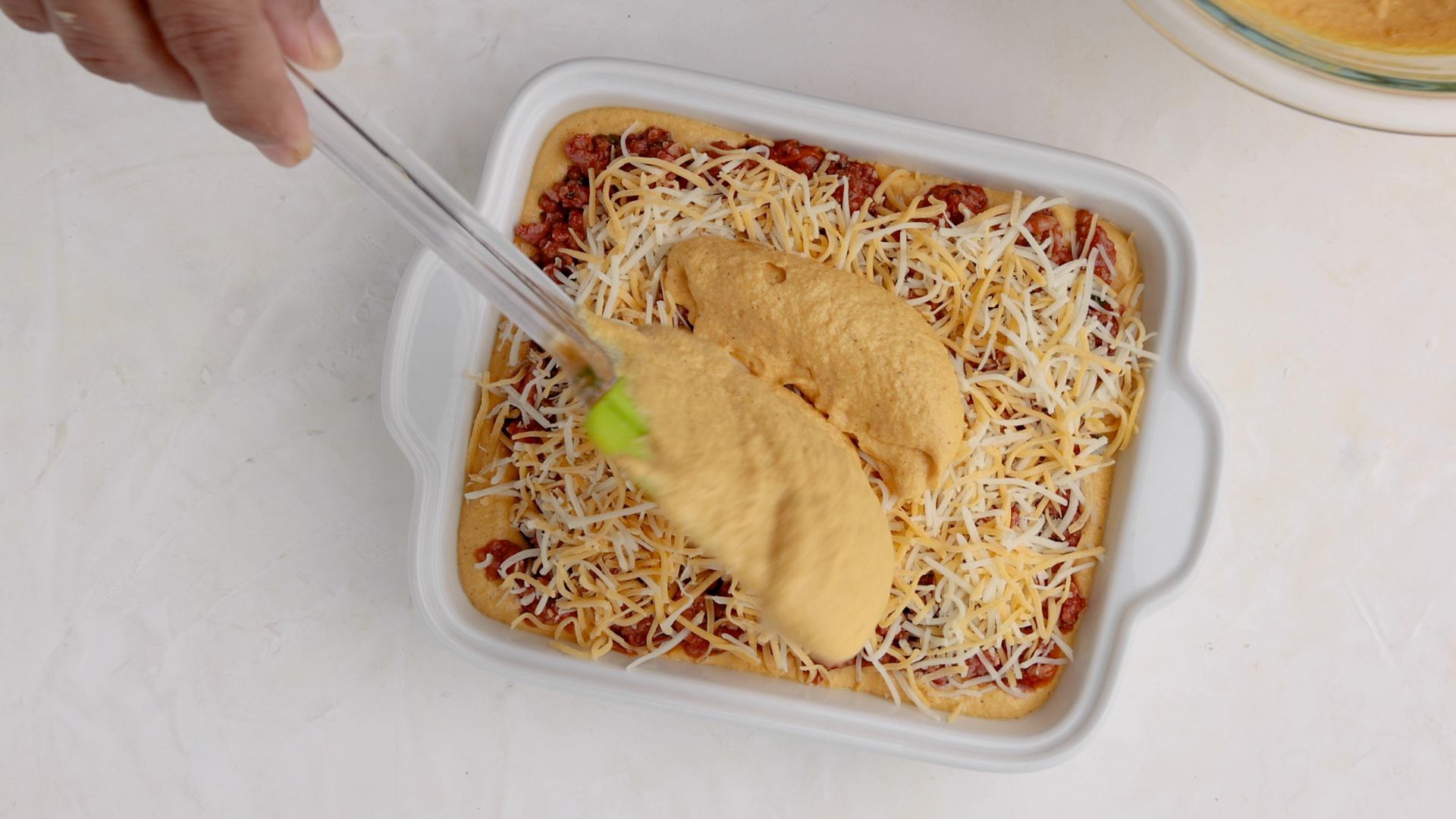 Layering: Grease a lasagna pan, then line the bottom with parchment paper, then with a piece of plantain leaf that has been greased beforehand.Layer half of the batter, then layer the filling. Add a layer of cheese, then the remaining batter.Cover with a greased plantain leaf rectangle, then cover very tightly with aluminum foil.
Layering: Grease a lasagna pan, then line the bottom with parchment paper, then with a piece of plantain leaf that has been greased beforehand.Layer half of the batter, then layer the filling. Add a layer of cheese, then the remaining batter.Cover with a greased plantain leaf rectangle, then cover very tightly with aluminum foil.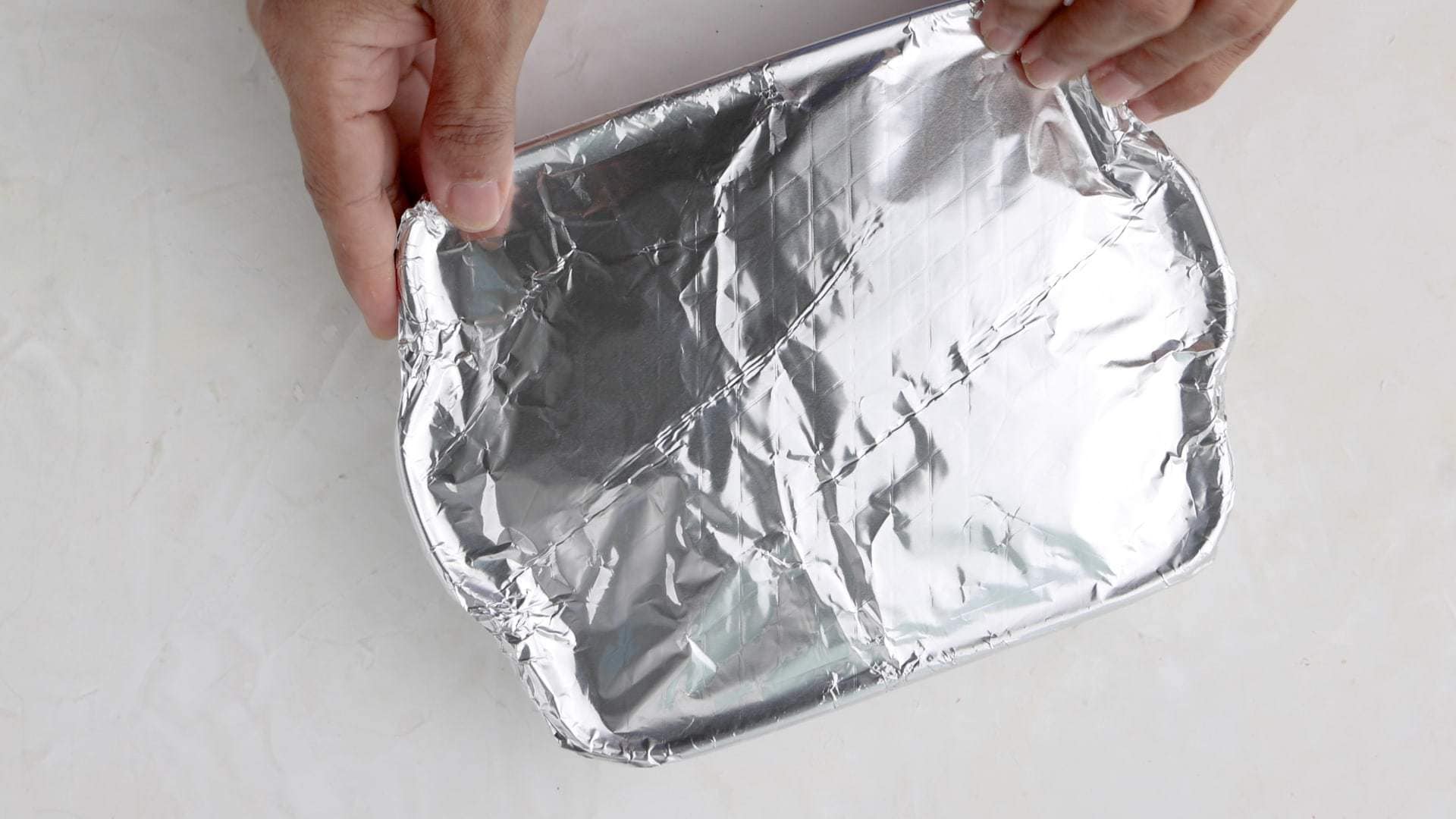 Baking: Bake in an oven preheated to 300 ºF [150 ºC] for 50 minutes.Remove from the oven and carefully lift a corner of the aluminum foil to check for doneness. Cover again and return to the oven for another 10-15 minutes if necessary. Let it rest covered for 15 minutes, or until it's time to serve.
Baking: Bake in an oven preheated to 300 ºF [150 ºC] for 50 minutes.Remove from the oven and carefully lift a corner of the aluminum foil to check for doneness. Cover again and return to the oven for another 10-15 minutes if necessary. Let it rest covered for 15 minutes, or until it's time to serve. Serving: Serve garnished with hot sauce and/or ketchup.
Serving: Serve garnished with hot sauce and/or ketchup.
Video
Tips and Notes
Nutrition
Nutritional information is calculated automatically based on ingredients listed. Please consult your doctor if you need precise nutritional information.


